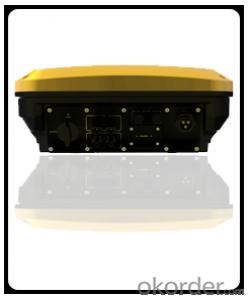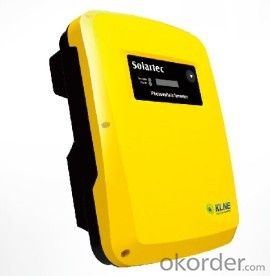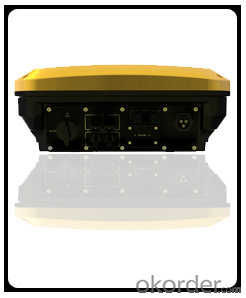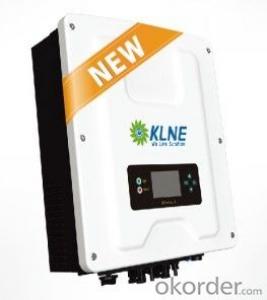36 Volt Solartec 1500 On Grid Inverter with WiFi
- Loading Port:
- Shanghai
- Payment Terms:
- TT OR LC
- Min Order Qty:
- -
- Supply Capability:
- 10000 set/month
OKorder Service Pledge
Quality Product, Order Online Tracking, Timely Delivery
OKorder Financial Service
Credit Rating, Credit Services, Credit Purchasing
You Might Also Like
Solartec 1500, 2000,2500,3000,3600,4000,4600,5000 1MPPT, single phase IP 65 New mold with Pure thick aluminum crust. Safe Flexible SimpleEfficient
■ Efficiency of up to 97.6 %
■ Transformerless
■ Integrated DC switch
■ Comprehensive protection functions
■ LCD backlight
■ For indoor and outdoor installation
■ ‘Plug and play’connection for easy installation
■ Friendly interface, easy to install and maintain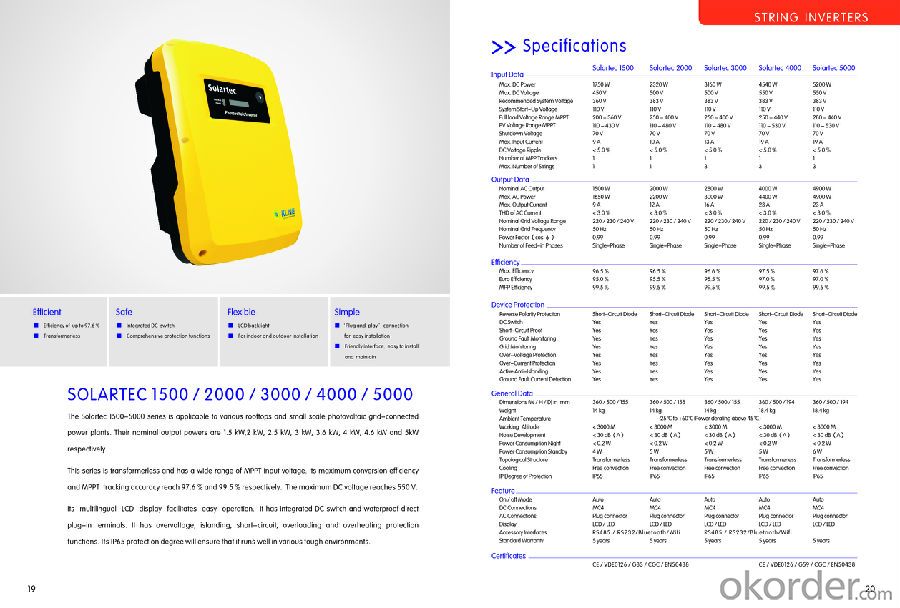
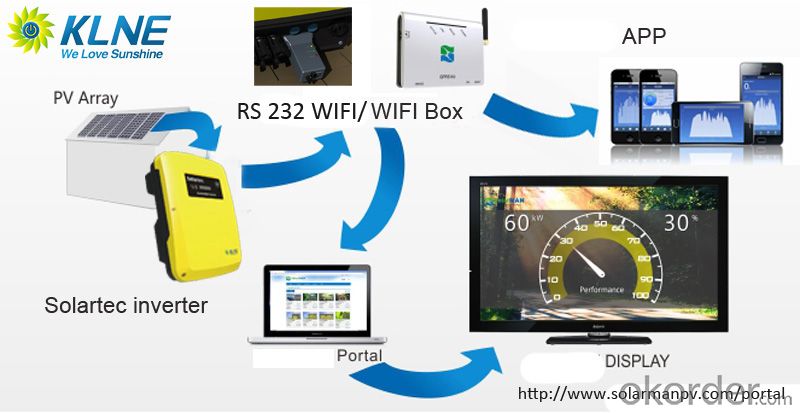
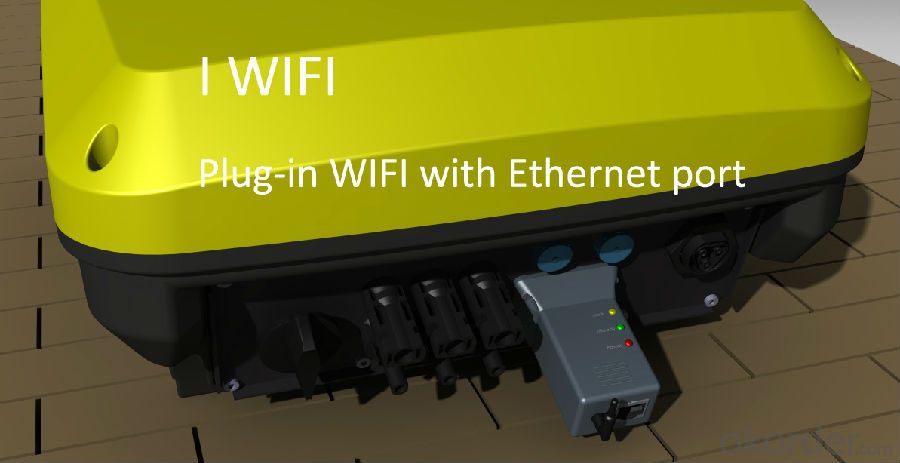
Beijing Kinglong New Energy Technology Co., Ltd.
3rd. floor, Caihong North Building West Entrance, 11 Xinxi Road, Shang Di, Haidian Dist, Beijing, China
T.:+86(0)1062988159-678 M.:+86 1800 1179 441
Skype:klnevivian
Skype:klnevivian
E:vivian@kinglongpower.com
Website: www.kinglongpower.com
- Q: How does a solar inverter handle variations in ambient temperature?
- A solar inverter is designed to handle variations in ambient temperature by incorporating temperature compensation algorithms. These algorithms adjust the inverter's performance parameters, such as voltage and frequency, based on temperature measurements. This ensures that the inverter operates optimally and efficiently across a wide range of temperature conditions, maintaining stable and reliable power conversion from the solar panels.
- Q: Can a solar inverter be used with a backup generator?
- Yes, a solar inverter can be used with a backup generator. In fact, this combination can provide a reliable and efficient power supply. The solar inverter converts the DC power generated by solar panels into usable AC power, while the backup generator can be used to supplement power during times when solar energy is insufficient or unavailable. This setup allows for a more sustainable and uninterrupted power supply.
- Q: What are the key factors affecting the warranty coverage of a solar inverter?
- The key factors affecting the warranty coverage of a solar inverter include the length of the warranty period, the terms and conditions outlined in the warranty document, the reputation and financial stability of the manufacturer, the quality and reliability of the inverter components, and any limitations or exclusions stated in the warranty.
- Q: What is the role of a maximum power point tracker in a solar inverter?
- The role of a maximum power point tracker (MPPT) in a solar inverter is to ensure that the solar panels are operating at their maximum power output. The MPPT continuously monitors the voltage and current of the solar panels and adjusts the operating conditions to find and maintain the maximum power point. This optimization helps to maximize the efficiency and overall energy generation of the solar system.
- Q: How does a solar inverter ensure safety during maintenance?
- A solar inverter ensures safety during maintenance by incorporating various safety features such as automatic shut-off mechanisms, grounding protection, and isolation of high-voltage components. Additionally, it may have user-friendly interfaces and clear warning labels to guide technicians while working on the equipment. These measures help prevent electrical hazards and ensure the safety of maintenance personnel.
- Q: Can a solar inverter be used with a solar-powered security system?
- Yes, a solar inverter can be used with a solar-powered security system. A solar inverter is essential for converting the direct current (DC) generated by solar panels into alternating current (AC) that can be used to power electrical devices, including security systems. By using a solar inverter, a solar-powered security system can efficiently utilize solar energy and ensure uninterrupted operation.
- Q: Can a solar inverter be used with different monitoring platforms?
- Yes, a solar inverter can be used with different monitoring platforms as long as it is compatible with the protocols and communication standards supported by those platforms.
- Q: How does a solar inverter handle frequency variations?
- A solar inverter handles frequency variations by continuously monitoring the frequency of the grid and adjusting its output accordingly. It uses advanced electronics and control algorithms to synchronize its output with the grid frequency, ensuring a stable supply of electricity.
- Q: What is the maximum efficiency of a solar inverter?
- The maximum efficiency of a solar inverter typically ranges from 95% to 98%.
- Q: How does a solar inverter handle high temperatures?
- A solar inverter handles high temperatures by incorporating various cooling mechanisms such as heat sinks, fans, and thermal management systems. These components help dissipate heat generated during the inverter's operation, preventing overheating and ensuring optimal performance even in hot climates.
Send your message to us
36 Volt Solartec 1500 On Grid Inverter with WiFi
- Loading Port:
- Shanghai
- Payment Terms:
- TT OR LC
- Min Order Qty:
- -
- Supply Capability:
- 10000 set/month
OKorder Service Pledge
Quality Product, Order Online Tracking, Timely Delivery
OKorder Financial Service
Credit Rating, Credit Services, Credit Purchasing
Similar products
Hot products
Hot Searches
Related keywords

